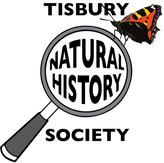What interesting wildflowers can we find in Tisbury and surrounding areas?
Photo: Haredene Wood (Julia Willcock), text by Debbie Carter
This is an amateur botanist’s take on the flowers from four habitat types (chalk downland, hay meadows, woodland and wetland) within reach of Tisbury and District.
Chalk downland
Photos: Andrew Carter - Gentian, Pyramid Orchid & Devil's Bit Scabious
Chalk downland is an internationally rare habitat and we are very fortunate to have many areas
with an abundance of chalk-loving plants. Old chalk grassland is one of the richest habitats in terms
of botanical diversity and can contain as many as 45 species per square metre.
What wildflowers can I see in chalk grassland?
with an abundance of chalk-loving plants. Old chalk grassland is one of the richest habitats in terms
of botanical diversity and can contain as many as 45 species per square metre.
What wildflowers can I see in chalk grassland?
|
Orchids:
Other plants:
|
|
|
And, if you are lucky, you might find Gentian flowers, both the Early and Autumn Gentian. |
Where can I see chalk grassland wildflowers?
Very locally: Tisbury Jubilee Meadow (at the back of the Nadder Centre). Wildflowers are increasing
yearly and include Pyramid and Bee Orchids, Broomrape, Vetches, Sainfoin, Ragwort, Oxeye Daisies
and more.
Chalk Downlands near us (Ordinance Survey grid reference for access).
Very locally: Tisbury Jubilee Meadow (at the back of the Nadder Centre). Wildflowers are increasing
yearly and include Pyramid and Bee Orchids, Broomrape, Vetches, Sainfoin, Ragwort, Oxeye Daisies
and more.
Chalk Downlands near us (Ordinance Survey grid reference for access).
- Shaftesbury Drove. North and South facing. White Sheet Hill (Grid Ref.: ST 933 240)
- Swallowcliffe Down and Sutton Down (Grid Ref.: ST 990 268)
- Ladydown, between Tisbury and Chilmark (Good for Bee Orchids) (Grid Ref.: ST 958 307)
- Fovant Down (Grid Ref.: ST 002 266)
- Melbury Down & Spread Eagle Hill, National Trust (Grid Ref.: ST 886 187)
- Fontmell Down, National Trust (Grid Ref.: ST 128)
- Hambledon Hill, National Trust (Grid Ref.: ST 838 128)
- Win Green, National Trust. (Grid Ref.: ST 924 205)
- Middleton Down, Wiltshire Wildlife Trust. (Grid Ref.: SU 043 252)
- Coombe Bissett Down, Wiltshire Wildlife Trust. (Grid Ref.: SU 111 256)
- Winterbourne Down, RSPB (Grid Ref.: SU 214 401)
- Cley Hill, National Trust (Grid Ref.: ST 837 443)
- Battlesbury Down (Grid Ref.: ST 898 455)
Hay meadows
Photos: Andrew Carter - Butterfly Orchid, Snake's Head Fritillary & Bee Orchid
Traditional hay meadows have disappeared by over 90% due to changes in farming practice, use of artificial fertilisers, herbicides and insecticides.
What wildflowers can I see in hay meadows?
What wildflowers can I see in hay meadows?
|
Orchids:
|
Other wildflowers:
|
Where can I see hay meadow wildflowers?
We have two spectacular hay meadows within reach of Tisbury:
Both have SSSI (Site of Special Scientific Interest) status and are amongs the best examples of unimproved, traditionally-managed hay meadows in UK.
We have two spectacular hay meadows within reach of Tisbury:
- Clattinger Farm, Wiltshire Wildlife Trust (Grid Ref.: SU 012 933), accessed also from Lower Moor Farm (Grid Ref.: SU 007 939). Spectacular unimproved hay meadow full of orchids and Snake's Head Fritillaries, visit in late April for Fritillaries and June for orchids. Unsurprisingly it is an amazing site for butterflies and cuckoos.
- The Kingcombe Centre, Dorset Wildlife Trust (Grid Ref.: SY 554 990). This reserve has been traditionally farmed for generations without use of artificial fertilisers, herbicides or pesticides.
Both have SSSI (Site of Special Scientific Interest) status and are amongs the best examples of unimproved, traditionally-managed hay meadows in UK.
Woodland
Photos: Andrew Carter - Snowdrops, Cowslips & White Violets
What wildflowers can I see in woodland?
|
|
|
Where can I see woodland wildflowers?
Special recommendations:
- Great Ridge (Grid Ref.: ST 926 344 or ST 955 368)
- Groveley Wood, Forestry Commission (Grid Ref.: SU 008 350)
- Oysters Coppice, Wiltshire Wildlife Trust (Grid Ref.: ST 896 256)
- Wardour (Grid Ref.: ST 938 264)
- Chase Woods, Rushmore (Grid Ref.: ST 952 183)
- Duncliffe, Woodland Trust (Grid Ref.: ST 826 222)
- Garston Wood, RSPB (Grid Ref.: SU 003 194)
Special recommendations:
- Bluebells in Wardour, Chase Woods, Duncliffe and Garston Wood.
- Snowdrops in Wardour and on the banks near Pyt House Walled Garden.
- Wild Daffodils in Oysters Coppice in March.
Wetland
Photos: Andrew Carter - King Cups, Meadow Saxifrage & Southern Marsh Orchids
What wildflowers can I see in wetlands?
|
|
|
Where can I see wetland wildflowers?
- Langford Lakes, Steeple Langford (Grid Ref.:SU 037 370)
- Landford Bog (Grid Ref.: SU 259 186)
- Lower Moor Farm, North Wiltshire (Grid Ref.:SU 023 913)
- Rivers Wylie and Nadder, Avon and Ebble
- Fonthill Lake (Grid Ref.: ST 932 312)
Recommended website for wildflower ID: UK Southwest.
Proudly powered by Weebly












